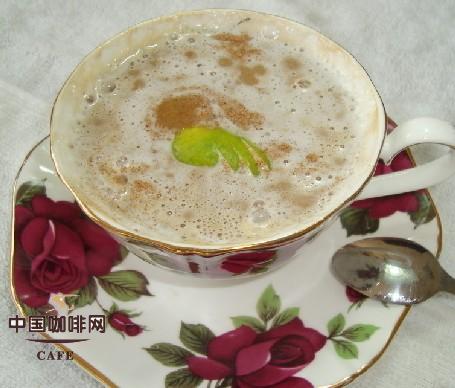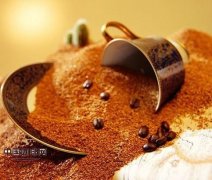The History of Coffee Development in China Coffee in the late Qing Dynasty in the eyes of Shanghainese

Warm winter, make a cup of coffee, sitting in the sunrise living room reading, the mood is as hot as the coffee in front of me. In ancient poetry, all poems chanting things, such as plum, orchid, bamboo and chrysanthemum, are rivers, rivers, mountains and waters. It is almost impossible to involve a Western drink-coffee. Because the national drink in China is tea. Therefore, poems about tea can be found everywhere. To my surprise, some poems about coffee appeared in some poems in the late Qing Dynasty.
Before the Qing Dynasty, coffee, a western drink, had not yet entered China, so it was impossible for such a foreign object to appear in the poems of Chinese literati. At the end of the Qing Dynasty, with the falling of the west wind and the beautiful rain, the coffee appeared in the coastal cities of China. The literati who first came into contact with this foreign drink also began to appear the works of chanting coffee in their works.
For example, the Qing poet Mao Quanquan said in his poem that he felt bitter when drinking coffee because he forgot to put milk in it:
Drink Huanjiafei tea, forget to mix milk; milk is as sweet as joyful, and non-like bitterness. Another example is Pan Feisheng's word of "Linjiang Immortals": the first Red House listens to the rainy night, and the piano secretly asks the time of life.
The studio just covered the green window screen, stopped the spring feeling lazy, and took off the lotus boots. Maybe sit next to each other in bed and whisper some rough language. When he got up, he added non-tea, but he laughed and called to see the Tang flowers.
Teaching foreign languages and drinking coffee-what a vivid picture of a young couple experiencing western customs in the late Qing Dynasty. But afraid of the little maidservant's joke, he sent the maidservant out. Are there any jokes about learning a foreign language and drinking coffee now?
In the late Qing Dynasty, "Zhuzhi ci" on Shanghai also had a chanting of coffee, such as a poem entitled "Kao Fei".
Kao Fei is a common name, and it is made of beans on the market. Colored sugar is sweet and bitter, and westerners cook tea for each meal. The word reads: what on earth is that everyone is calling "coffee"? Oh, it is said that it is made of beans (coffee beans). Drink coffee with sugar, and foreigners use it as a substitute for tea after dinner. Another example is:
The big dishes start with the soup, but the middle dishes are difficult to distinguish. There should be too few patches for meals, and the game will end after having coffee. This is a typical scene when Chinese people taste western food for the first time: at the beginning of the meal, they start with soup (perhaps country soup of Italy), and then some dishes are not exactly what they are (maybe beef or foie gras), and they eat "patches" instead of rice. You can't be too hungry. In the end, you just drink coffee and finish it, so you break up.
This is how Shanghainese saw coffee and western food 100 years ago. Nowadays, coffee and western food are all over the middle school.
Important Notice :
前街咖啡 FrontStreet Coffee has moved to new addredd:
FrontStreet Coffee Address: 315,Donghua East Road,GuangZhou
Tel:020 38364473
- Prev

The basic knowledge of Classic Coffee in various countries
Viennese Coffee: enjoy comfortable and mild coffee in the charming season: Viennese Coffee has a unique way of drinking. Without stirring, it starts with cold cream, feels very comfortable, then drinks hot coffee, and finally feels the sweetness of granulated sugar, with three different tastes. Preparation method: pour 3 tablespoons coffee sugar or coarse sugar into the cup, then deep-fry
- Next

Common sense of Coffee Culture Coffee Culture of countries all over the World
Beginning with Penicia in 1615, coffee culture was spread throughout Europe. That strength, of course, set off friction everywhere. It also caused Islamic drinks to be brought to Christians in Rome, and there are two arguments about whether they agree or not. King Clement VIII of France at that time, although it was the devil's drink, it was so delicious. It's a pity to let this drink go to the pagan tea station. "because
Related
- How did the Salvadoran coffee industry develop in Central America?
- What exactly does the golden cup extraction of coffee mean?
- The Origin of Coffee flower
- [2023 Starbucks World Earth Day] there are more meaningful things besides free Starbucks coffee!
- What kind of coffee is there in Spain? 9 Flavors of Spanish Coffee
- Aromatic African coffee| Kenya's coffee culture and historical production area
- Liberica Coffee Bean knowledge: the characteristics of Liberian Coffee beans of the three original species of Coffee beans
- The origin and formula of Spanish latte introduces the taste characteristics of Bombon coffee in Valencia, Spain.
- How to adjust the solution of over-extracted coffee
- What is the tasting period of coffee beans? What is the period of coffee and beans? How should coffee wake up and raise beans?

